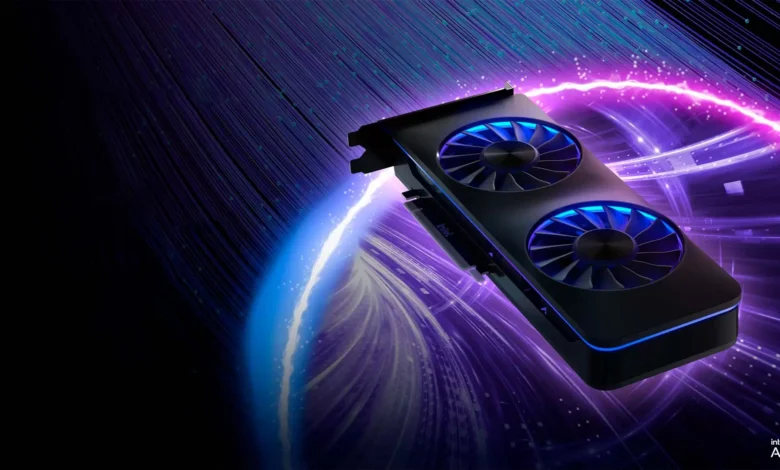
Developers are deeply involved in influencing how visual experiences in gaming, content creation, and other industries will develop in graphics computing.
The growing power and versatility of GPUs are driving up the need for more advanced development tools and resources.
One unique feature of Intel Arc Studio is its extensive toolkit, which is meant to enable developers to fully utilize the potential of Intel Arc GPUs.
Keep reading to learn about the Intel Arc Studio’s capabilities, effects on graphics development, and tools for developers.
An Overview of Intel Arc Studio
A single development environment created especially for graphics programming, optimization, and debugging is called Intel Arc Studio.
It provides a streamlined workflow for designing, testing, and delivering GPU-accelerated applications across multiple platforms and use cases. It is built on industry-standard frameworks and integrated development environments (IDEs).
At its core, Intel Arc Studio is a collection of tools and resources designed to meet the different demands of developers, ranging from indie gaming studios to business software firms.
Intel Arc Studio empowers developers to achieve new levels of performance, efficiency, and creativity in graphics computing by offering a comprehensive range of capabilities and functionalities.
Intel Arc Studio’s Essential Elements
1: VTune Profiler from Intel
It takes a thorough understanding of system behavior and resource usage to optimize graphics performance. The Intel VTune Profiler enables developers to profile and analyze CPU-GPU interactions, memory access patterns, and threading behaviors to detect performance bottlenecks and inefficiencies.
Intel VTune Profiler uses sophisticated profiling techniques like hotspot analysis, memory bandwidth consumption, and concurrency visualization to help developers optimize their applications for multi-threaded execution, cache locality, and parallelism.
Developers can achieve greater frame rates, lower latency, and better responsiveness in graphics-intensive apps by fully utilizing CPU and GPU resources.
2: IGC, or Intel Graphics Compiler
The Intel Graphics Compiler (IGC) is the backbone of Intel Arc Studio and provides a high-performance compiler specialized for Intel Arc GPUs.
With support for industry-standard shading languages such as HLSL, GLSL, and SPIR-V, IGC enables developers to write shader code that optimizes speed and compatibility across several hardware platforms.
Furthermore, IGC’s powerful optimization techniques and code generation capabilities make optimum use of GPU resources, allowing developers to achieve ideal frame rates and visual fidelity in their applications.
IGC enables developers to seamlessly add GPU-accelerated features to their applications, ranging from real-time rendering effects to compute-intensive simulations.
3: Intel GPA (Graphics Performance Analyzers)
Intel GPA (Graphics Performance Analyzers) is crucial in providing seamless and engaging gaming and interactive experiences. Intel GPA (Graphics Performance Analyzers) provides developers with tools for profiling, assessing, and optimizing graphics performance under various workloads and circumstances.
Intel GPA provides developers with real-time measurements, frame analysis, and hardware counters to discover performance bottlenecks, troubleshoot rendering difficulties, and fine-tune graphics pipelines for maximum efficiency.
Intel GPA provides actionable insights to improve the overall speed and responsiveness of GPU-accelerated applications, whether by
- Improving shader execution,
- Lowering draw call overhead, or
- Reducing memory bandwidth use.
4: Debugging Intel Graphics
Debugging GPU-accelerated apps presents unique issues compared to CPU-based development. Intel Graphics Debugger can assist. The Intel Graphics Debugger tackles these issues by providing developers with a comprehensive debugging toolkit specialized specifically for graphics programming.
Intel Graphics Debugger, with features such as
- Frame capture,
- Pixel history, and
- Shader debugging,
It allows developers to diagnose and resolve rendering issues with accuracy and efficiency. Developers can confidently discover mistakes, validate rendering algorithms, and iterate on design iterations when they visualize the rendering process and inspect the GPU state at various stages.
Optimised Processes
-
Collaborative Instruments
Arc Studio works smoothly with popular development environments such as Unity and Unreal Engine, allowing developers to take advantage of their existing skills and workflows. Furthermore, Intel offers online groups and forums for developers to interact, share information, and cooperate on projects.
-
Intel Game Dev Kit (GDK)
The Intel Game Dev Kit (GDK) is a set of libraries, samples, and documentation meant to expedite game creation. It contains tools for asset management, physics simulation, and audio integration to save developers time and effort.
-
Intel one API
One API simplifies development by offering a single programming model for CPUs, GPUs, and other hardware components. This eliminates the need to learn several programming languages and APIs, streamlining the development process.
-
Intel Software Development Tools (SDT)
SDT provides a comprehensive set of tools for debugging, profiling, and performance analysis, allowing engineers to find and resolve issues quickly and efficiently. This includes tools like the Intel VTune Amplifier and Intel Inspector, which offer detailed insights into program behavior.
Giving Resources and Help to Developers
Along with a wealth of tools, Intel Arc Studio offers documentation, support channels, and a plethora of resources to help developers during the graphics development process. Intel encourages a collaborative, learning, and knowledge-sharing environment with tutorials and sample code, as well as developer forums and community events.
Developers can receive access to optimized libraries, frameworks, and middleware to speed up graphics development and deployment through programs such as:
- Intel Developer Zone and
- Intel Graphics Performance Libraries (GFX-RL).
Furthermore, Intel’s dedication to open standards and interoperability guarantees compatibility with industry-standard APIs and frameworks, allowing for smooth interaction with current processes and toolchains.
What Intel Arc Studio Has In Store
Beyond specific developers and projects, Intel Arc Studio has a significant impact on the visual computing landscape and promotes innovation in a variety of industries. Intel Arc Studio democratizes access to powerful development tools and resources.
It allows developers of all backgrounds and skill levels to collaborate on the creation of immersive, visually appealing experiences.
Furthermore, Intel Arc Studio’s emphasis is on performance optimization, debugging, and profiling. It enables developers to push the limits of graphics computing, providing cutting-edge applications that take full advantage of Intel Arc GPUs.
Whether it’s gaming, content creation, scientific visualization, or enterprise applications, Intel Arc Studio drives innovation and advancement in graphics development.
Wrapping Up
Intel Arc Studio is a key component of Intel’s commitment to empowering developers and fostering innovation in visual computing. Intel Arc Studio, with its extensive set of tools, resources, and support channels, allows developers to achieve new levels of performance, efficiency, and creativity in graphics programming.
As the demand for immersive experiences and GPU-accelerated apps grows, Intel Arc Studio is positioned to play a significant role in determining the future of graphics computing.
Through the development of a vibrant community of developers, collaborators, and innovators, Intel Arc Studio ushers in a new era of visual computing excellence by opening doors and advancing graphics technology.
Read Also: Your Local Guide to Microsoft: Partners in Florida



